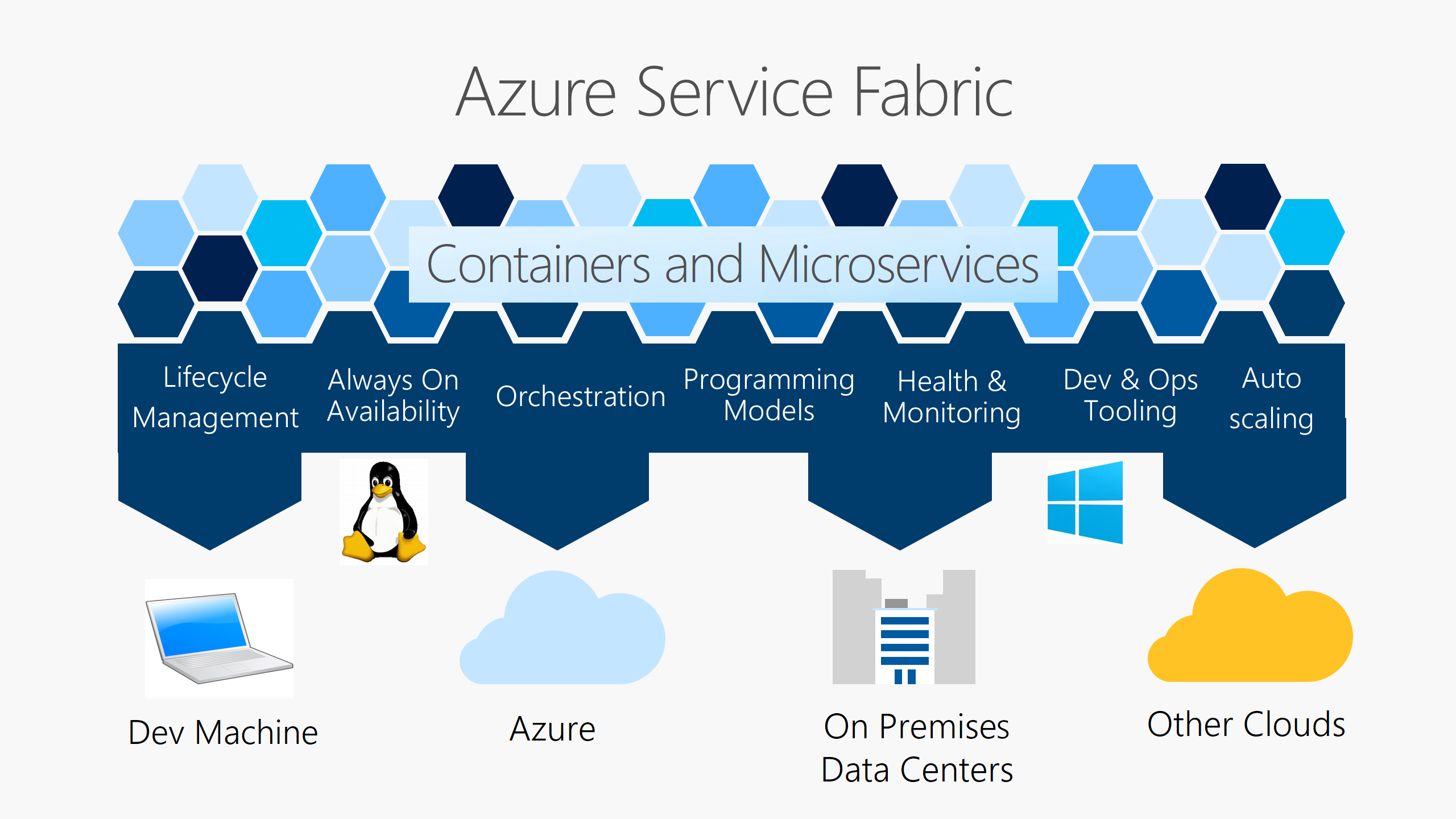Overview of Azure Service Fabric
Azure Service Fabric is a distributed systems platform that makes it easy to package, deploy, and manage scalable and reliable microservices and containers. Service Fabric also addresses the significant challenges in developing and managing cloud native applications.
A key differentiator of Service Fabric is its strong focus on building stateful services. You can use the Service Fabric programming model or run containerized stateful services written in any language or code. You can create Service Fabric clusters anywhere, including Windows Server and Linux on premises and other public clouds, in addition to Azure.

Service Fabric powers many Microsoft services today, including Azure SQL Database, Azure Cosmos DB, Cortana, Microsoft Power BI, Microsoft Intune, Azure Event Hubs, Azure IoT Hub, Dynamics 365, Skype for Business, and many core Azure services.
Container orchestration
Service Fabric is Microsoft's container orchestrator for deploying and managing microservices across a cluster of machines, benefiting from the lessons learned running Microsoft services at massive scale. Service Fabric can deploy applications in seconds, at high density with hundreds or thousands of applications or containers per machine. With Service Fabric, you can mix both services in processes and services in containers in the same application.
Learn more about Service Fabric core concepts, programming models, application lifecycle, testing, clusters, and health monitoring.
Stateless and stateful microservices
Service Fabric provides a sophisticated, lightweight runtime that supports stateless and stateful microservices. A key differentiator of Service Fabric is its robust support for building stateful services, either with Service Fabric built-in programming models or containerized stateful services.
Learn more about application scenarios that benefit from Service Fabric stateful services.
Application lifecycle management
Service Fabric provides support for the full application lifecycle and CI/CD of cloud applications including containers: development through deployment, daily monitoring, management, and maintenance, to eventual decommissioning. Service Fabric is integrated with CI/CD tools such as Azure Pipelines, Jenkins, and Octopus Deploy and can be used with any other popular CI/CD tool.
For more information about application lifecycle management, read Application lifecycle. For deploying existing applications to Service Fabric, see Deploy a guest executable.
Any OS, any cloud
You can create clusters for Service Fabric in many environments, including Azure or on premises, on Windows Server or Linux. You can even create clusters on other public clouds. The development environment in the Service Fabric SDK is identical to the production environment, with no emulators involved. In other words, what runs on your local development cluster is what deploys to your clusters in other environments.
For Windows development, the Service Fabric .NET SDK is integrated with Visual Studio and PowerShell. For Linux development, the Service Fabric Java SDK is integrated with Eclipse, and Yeoman is used to generate templates for Java, .NET Core, and container applications.
Compliance
Azure Service Fabric Resource Provider is available in all Azure regions and is compliant with all Azure compliance certifications, including: SOC, ISO, PCI DSS, HIPAA, and GDPR. For a complete list, see Microsoft compliance offerings.
Next steps
Create and deploy your first application on Azure Service Fabric:
Feedback
Coming soon: Throughout 2024 we will be phasing out GitHub Issues as the feedback mechanism for content and replacing it with a new feedback system. For more information see: https://aka.ms/ContentUserFeedback.
Submit and view feedback for